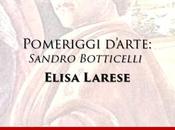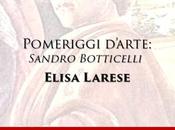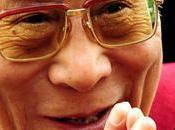Innanzitutto abbiamo chiesto ad Elisa come ha iniziato a scrivere di moda: dopo uno stage in Condé Nast, ha cominciato a lavorare per Yoox come fashion editor, per la selezione tematica di prodotto e la stesura dei copy. Si trattava di testi estremamente stringati e significativi al tempo stesso, e quindi molto di quello che ci sarebbe stato da dire rimaneva non scritto. Elisa ha dunque sentito l'esigenza di aprire un blog in cui dare voce a quel che rimaneva tagliato fuori. [video]
Il modo di lavorare nel mondo della moda ha subito una enorme frammentazione, che è andata di pari passo con la frammentazione dei canali online disponibili: se fino a qualche anno fa sarebbe stato sufficiente avere una pagina con la funzione di hub, ora la presenza online deve essere molto più capillare. In particolare, si è assistito alla frammentazione delle funzioni che ricoprono i vari social, e della tipologia di contenuto specifico veicolato su ciascun canale. [video]
Un'altra domanda fatta ad Elisa riguarda l'uso che i brand fanno di questo tipo di strumenti: chiaramente si tratta di tendenze, e la moda vive di tendenza. Invitare il blogger alla sfilata e coinvolgerlo fa passare il messaggio che l'azienda è "cool", giovane, ha capito da che parte tira il vento del mercato. Si suppone che il blogger sia in grado di avvicinare una fascia di consumatori giovani a un prodotto che molto spesso così giovane non è, anche e soprattutto per una questione di prezzo. Si crea tuttavia una fidelizzazione che va al di là del prodotto fisico, e che si traduce nell'acquisto, ad esempio, di un cosmetico dello stesso brand. [video]
Infine abbiamo chiesto come si integrano i vari canali offline e online dei brand di lusso: si tratta a suo avviso di una vera sfida, in quanto diventa necessario avvicinarsi al pubblico mantenendo però quel distacco che rende il prodotto di lusso tale. I fashion blogger possono fungere da anello di congiunzione, dato che sono visti dal pubblico come personaggi di riferimento. In ogni caso, il posizionamento e i messaggi veicolati tramite i social media vanno calibrati dal reparto digitale insieme al marketing, perché "avvicinarsi è un conto, ma esagerare è un attimo". [video]
Abbiamo parlato anche di Burberry, il caso di studio raccontato da Elisa, e del suo attuale lavoro in Giorgio Armani.
Invito naturalmente tutti a visionare la video intervista integrale, molto più ricca di questa mia sintesi.
Buona visione!
Maria Petrescu
10minuteswith Elisa Motterle
Some time ago we had the pleasure of interviewing Elisa Motterle, Web Fashion Editor and Writer in Giorgio Armani, and renown Italian fashion blogger.
First of all we asked Elisa how she started writing about fashion: after a stage in Condé Nast, she started working for Yoox as a fashion editor, for the product thematic selection and copywriting. They were extremely short and concise texts, so a lot of what there was to say remained unwritten. Elisa has felt the need to open a blog where to give voice to what remained cut out. [video]
The way of working in the world of fashion has suffered an enormous fragmentation, which has evolved together with the fragmentation of available online channels: if until a few years ago it would have been sufficient to have a page with a hub function, now the online presence must be much more capillar. In particular, we have assisted to the fragmentation of functions various social cover, and the type of specific content that is published on each channel. [video]
We asked Elisa what she thinks about fashion blogging, and how it can be sustained economically: given her studies and experience, she confessed she sometimes finds baffling to see certain improvised realities, but at the same time she realizes that the public isn't impressed by preparation, but rather by nice graphics and a smart marketing plan. She believes it is vital, for anyone who wants to start this kind of activity, to build an ubiquous online web to increase followers, and at the same time build journalistic relationships with editors. Very often blogs become a promotional channel in disguise, that brands love because they have a more "genuine" feel that the publiredactional. [video]
Another question we asked Elisa is about the use that brands make of these types of tools: clearly they are a new tendency, and new tendencies are what fashion lives of. Inviting a blogger to a fashionwalk sends a clear message: the brand is "cool", young, they've understood where the market is going. Bloggers, moreover, are able to attract a part of young consumers to a product that isn't so young, especially for a matter of price. Loyalty is built, though, and it translates in the purchase of a cosmetic by the same brand, for example. [video]
Finally we asked how the various offline and online channels are integrated in the case of luxury brands: it is a true challenge, because it becomes necessary to get nearer to the public and still maintain the distance that characterizes the luxury product. Fashion bloggers can act as a junction, since they are seen by the public as reference figures. In any case, the positioning and the messages published on social media must be well calibrated by the digital division together with marketing, because "to get near is one thing, to exagerate is extremely easy". [video]
We also talked about Burberry, an extremely interesting case study, and Elisa's current work in Giorgio Armani.
I invite everyone to view the full interview, much richer than my brief synthesis!
Enjoy!
Maria Petrescu







